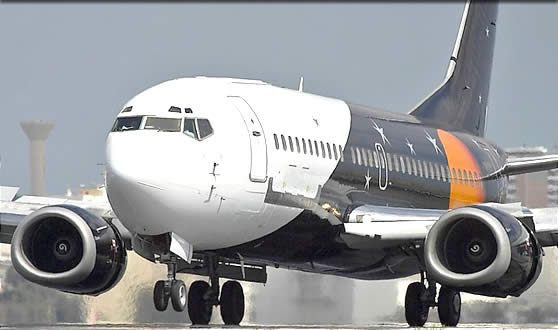MUSCLE MEMORY #2
From NASA ASRS CALLBACK Issue 434
NOTE: The plane on the photo is not related to the incidents narrated here

Photo: © Lars Veling http://www.airplane-pictures.net/photo/684945/g-ezug-easyjet-airbus-a320/
THE BEST LAID PLANS…
Even when the need for a non-standard sequence of events is recognized and planned for in advance, strong muscle memory concerning the standard sequence can prevail. This CRJ200 First Officer confirms that slowing down is the best way to engage the brain and disengage muscle memory.
■ When we received the aircraft, the previous crew had written up the #2 AC Generator. Maintenance came and deferred the generator. Per the MEL operations instructions, we were to keep the APU running for the entire flight. The Captain and I discussed this as part of our pre-departure briefing. When Tower cleared us to line up and wait, I ran the Takeoff Checklist and turned off the APU out of habit. I realized my mistake and informed the Captain. We notified the Tower that we would need to exit the runway and get back in line to restart the APU.
This incident illustrates why it is important to slow down when completing checklists and flows during abnormal operations to ensure they are completed properly. I shutdown the APU due to “muscle memory” during the Takeoff Checklist even though we had discussed the MEL procedures for the deferred AC Generator during the pre-departure briefing.
ROLLING IN THE SNOW
A CRJ900 Captain, faced with an oncoming snow plow, went for the brakes and engine reverse, but muscle memory had other ideas.
■ After landing, we were taxiing to our gate. The taxiways were snow covered with fair braking action. We had shut down our right engine and left the APU shut down. A snow plow was on our right and just ahead of us. I was watching him when he abruptly started to turn left into us. I applied the brakes, with minimal effectiveness, and I was going to apply reverse thrust, but muscle memory kicked in and I mistakenly shut down the left engine. We lost all power and rolled to a stop. The plow never completed his turn, but saw us and turned away. We informed ATC and started the APU to restart an engine. Within two minutes the engine was running again and we taxied to the gate without incident.
ARMED AND DANGEROUS
An A320 First Officer got a first-hand lesson in how a busy, rushed environment can cause muscle memory to override a more methodical thought process.
■ This incident started about 5-10 minutes after the last passenger deplaned. Doors 1L and 2L were both open. There were many cleaners on the aircraft from the front to the back. The situation was busy at best, frantic at worst. I was standing on the front air stairs when a Flight Attendant asked me if I could supervise the opening of Door 2R. The cleaners were beating on the door to have it opened so that the trash could be emptied. I agreed to supervise since no other crewmembers were available. I followed the Flight Attendant to the back of the airplane where various ramp personnel were in the aft galley conducting their work. The Flight Attendant proceeded to arm the door as it had been disarmed from deplaning. It was at this point that I became confused. Before I could intervene, the Flight Attendant pulled up on the handle. The door opened and the slide blew. Luckily, no one was injured.
I should have done a better job confirming what was actually going on and tried to slow the process down.… The overall issue for me was being distracted, rushed and uncertain of my supervision objective. I also believe the Flight Attendant was trying to do the right thing, especially as a new employee. She was rushed and getting pressure from the cleaners. In retrospect, I think she was operating on muscle memory. Since she had already disarmed the door, the next event was to arm it.
*********
Our cognitive processing begins with selecting an event and maintaining it in our consciousness. The event may be internally generated (thought) or initiated by internal or external stimuli. Given the great number of stimuli impending on our sensory systems at any moment in time, we must select events or stimuli for further processing. To accomplish this, we selectively “focus on” and “attend to” specific stimuli that are most relevant to our purpose.
However, our attention resources are limited. Wickens in his model uses the analogy of a resevoir that is part of a closed system with a “set” amount of attentional resources. When attentional resources are expended on one component of the information processing system, less remains for use by the other components.*
Attention
Selective focusing or “attention” determines what information is transmitted to working memory. The amount of stimuli that can be taken in by our sensory systems is considered to be unlimited. However, the amount of information that can be held in working memory is limited to 7 + 2 items for 18 to 20 seconds.* Working memory, therefore, creates a “bottleneck” for incoming information. In a sense, it is a “bottleneck” with a purpose–otherwise, we would be inundated with irrelevant stimuli. Attention is also influenced by:
- Expectancy – We direct our sensory receptors–eyes, ears, nose, fingertips–to where we anticipate locating information within our environment. Surprise occurs when events differ from our expectation.**
- Relevance – We seek information/stimuli relevant to our immediate tasks and our goals.**
*Miller, G., “The Magical Number Seven, Plus or Minus Two: Some Limits on Our Capacity for Processing Information,” The Psychological Review, 1956, vol. 63, pp. 81-97.
** Wickens, C.D., “Attention to Safety and the Psychology of Surprise,” Keynote address: 2001 Symposium on Aviation Psychology: Ohio State University.
***Values for the duration of sensory and short-term memory will vary by study & researcher.
Attention Control – Our attention constantly shifts as a result of voluntary direction (internal) or automatically as a result of attention attracting stimuli (external) in the environment. Our focus of attention results from whether a stimulus activates Top-Down (internal) or Bottom-Up (external) processes.
- Top-Down – Attention control is under conscious direction, using information residing in memory stores. It is also termed concept driven or effortful attention. Top-Down attention is purposefully directed and is influenced by expectancy and relevance, as well as prior knowledge and experience. Examples are a search task such as when looking for the face of a friend in a crowd, seeking a specific item on a control display, or concentrating on performing a task. Top-down attention is slower than bottom-up attention.*
- Bottom-Up – Attention is captured by external stimuli, usually unexpected events. This is also termed data driven or automatic attention. Examples are a bright flash of light, a loud sound, loss of balance due to slippery conditions, or impact by an object. Bottom-up attention is very rapid, reaching its maximum 100-200 milliseconds after stimulus perception.****
****Taylor, J.G., “Recent Advances in Understanding Attention,” Science & Consciousness Review, 2003, on-line.
Divided and Sustained Attention
Task and interface design need to consider other attentional aspects of human functioning. Many tasks require divided attention, that is, sharing attention among several aspects of the environment. Driving is a divided attention task, as is piloting an aircraft. Other tasks require sustained, concentrated attention to detect small changes in displays or control panels. Examples are air traffic control and nuclear power plant monitoring.
- Divided Attention – Defined as the ability to perform more than one task at a time. The ability to perform these tasks successfully depends in part on the nature of the tasks and whether or not they use the same or different cognitive processes. If the tasks draw upon different processes there is a higher likelihood that the tasks can be successfully performed concurrently. If the tasks require use of the same cognitive processes, it is less likely the tasks will be performed within acceptable time and accuracy parameters. The more similar the tasks, the more difficult it will be to perform them simultaneously. Also, the more difficult the tasks, the harder it will be to perform then simultaneously, although this may be somewhat ameliorated by practice.*****
- Sustained Attention – Sustained attention requires concentrating on one primary task for a long period of time while remaining alert to changes. With the increased use of automated systems, many jobs have changed from “active doing” to monitoring or “supervising” systems. Unfortunately, humans are notoriously poor at these types of tasks. It has been consistently found that human performance quickly deteriorates over time such that “vigilance decrement” is a common term in research.
***** adapted from Burnett, G. E, 2003, University of Nottingham
The previous paragraphs were excerpted from FAA Human Factors Awareness Web Course
FURTHER READING
**********************
 By Laura Victoria Duque Arrubla, a medical doctor with postgraduate studies in Aviation Medicine, Human Factors and Aviation Safety. In the aviation field since 1988, Human Factors instructor since 1994. Follow me on facebook Living Safely with Human Error and twitter@dralaurita. Human Factors information almost every day
By Laura Victoria Duque Arrubla, a medical doctor with postgraduate studies in Aviation Medicine, Human Factors and Aviation Safety. In the aviation field since 1988, Human Factors instructor since 1994. Follow me on facebook Living Safely with Human Error and twitter@dralaurita. Human Factors information almost every day


